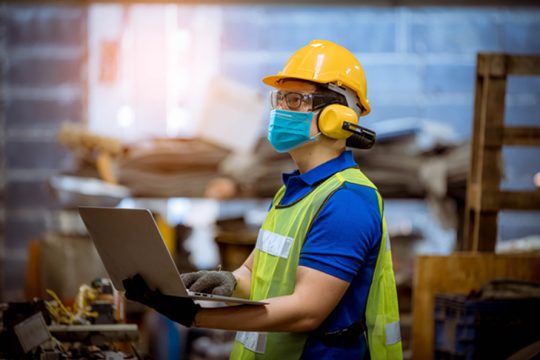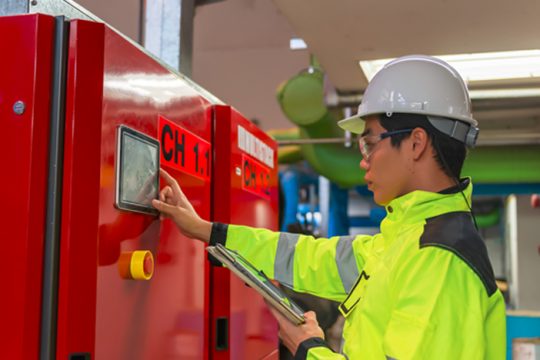All employees, from those working in the warehouse to those in the executive suite, have a right to work in an environment free from threats to their health and safety. In order to ensure the health and safety of workers, it is necessary to have a firm grasp of occupational hygiene in Qatar, the branch of study concerned with the prevention of work-related injury, illness, and impairment through the identification, assessment, communication, and management of workplace environmental stressors.
When it comes to workplace safety and health, occupational hygiene in Qatar covers a lot of ground. You should know the fundamentals of most of them as a manager. Not all of the aspects of industrial hygiene are listed here, but they are all crucial.
Components of industrial hygiene
Ergonomics: Ergonomics is the study of how individuals function in the workplace, with the ultimate goal of reducing stress and injuries caused by poor posture, misuse of muscles, and repetitive tasks. Carpal tunnel, tendinitis, and lower back ailments are just some of the conditions that can be avoided with careful attention to ergonomics. It is crucial to include workers in the ergonomics intervention process to tailor jobs to individual workers and provide enough training on topics like how to lift boxes safely. Office ergonomics can be enhanced by rearranging furniture, upgrading equipment, instituting time limits on specific tasks, and so on.
Noise: Long-term exposure to noise, including both desirable and undesirable sounds, can damage employees’ hearing over time. Several methods exist for dealing with noise problems, including constructing a facility to reduce noise levels, keeping personnel at a safe distance from noisy machinery, and providing personal noise-canceling headphones or ear muffs.
Temperature: Both hot and cold temperatures are hazardous to employees. Heat exhaustion and heat stroke are real risks for workers in hot environments, and heat stroke is a medical emergency that must be treated right away. It’s important to cool the air when possible and let workers gradually adjust to the heat (acclimatisation) by drinking modest amounts of water often. Hypothermia and frostbite can set in after being exposed to freezing temperatures for too long. Employees should be permitted to take breaks in higher conditions and wear warm clothing as necessary.
Indoor air quality: Pollution from machines or equipment inside the building, traffic pollution outside the building, dust from mechanical operations, and gases are all potential threats to indoor air quality. Issues including persistent coughing, nausea, and severe headaches are all linked to poor air quality. Air filtering in an HVAC system can aid in removing impurities from the air and ensuring that clean air is brought into the workspace.
Chemical exposure: Workers may be exposed to chemicals by skin contact, breathing in toxic fumes, or ingesting harmful dust. Common household chemicals such as bleach, petrol, and pesticides all carry the potential for harm. While low concentrations of many chemicals are generally safe, some of the most common compounds can still induce symptoms in persons with heightened sensitivity, and almost all chemicals can be harmful if used improperly or in excessive quantities. Ventilation, personal hygiene (washing one’s hands, for example, can limit the quantity of chemicals absorbed by the skin), and regular maintenance of equipment to prevent leaks and malfunctions all fall under this category of safety measures.
Radiation: Non-ionizing radiation and ionizing radiation are the two main categories of radiation. Burns are the most common occupational hazard associated with non-ionizing radiation, and ultraviolet (UV) radiation and laser radiation are the two most common sources. Ionizing radiation is more likely to have serious consequences for employees’ health, because it is present in a wide variety of workplaces, from hospitals to nuclear power plants and their ancillary buildings. Cancer and infertility are only two of the long-term problems that could arise from exposure to this kind of radiation. As of hygienist in Qatar, workers should be protected from ionizing radiation as much as possible by using shielding materials like lead or concrete.
Biological hazards: The human body is vulnerable to acute and chronic infections caused by living organisms including fungi, viruses, and bacteria. Workers who deal with plants or animals, as well as those in laboratories or medical facilities, are at a heightened risk for biological hazards; nevertheless, all workers are vulnerable to risks like mould and Legionella bacteria. It is possible to lessen the danger posed by biological hazards through practices including cleaning one’s hands, providing adequate ventilation, wearing protective gear like gloves and respirators, and even isolating the danger in some circumstances.
Eliminating and controlling Hazards: After a hazard has been discovered, there is a methodical process for removing it or controlling it so that it poses no risk at all. The first step is to remove the potential for harm from the process or activity altogether by engineering. Next, local exhaust ventilation, safe work procedures, protective clothing, and administrative controls should be implemented.
Controlling possible health risks to workers and the business can be achieved by optimising these aspects of occupational hygiene in Qatar through monitoring and analysis of hazards and technical solutions to minimise such hazards. These risks can lead to health problems for employees as well as downtime and decreased output for your business. You can have a healthier, more productive workplace if you understand the concepts of industrial hygiene and put them into practise with the help of a hygienist in Qatar.



